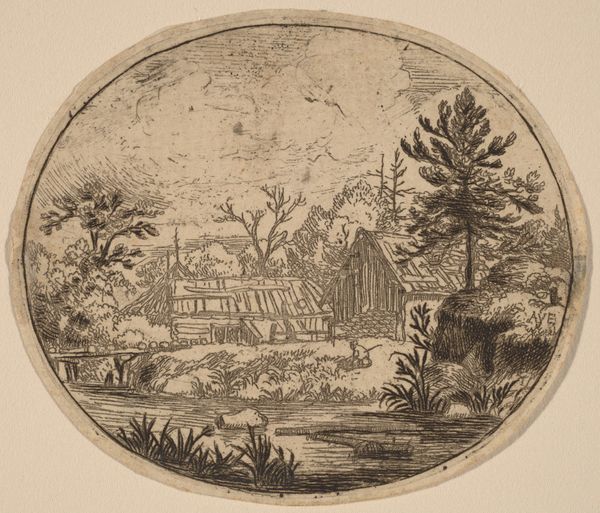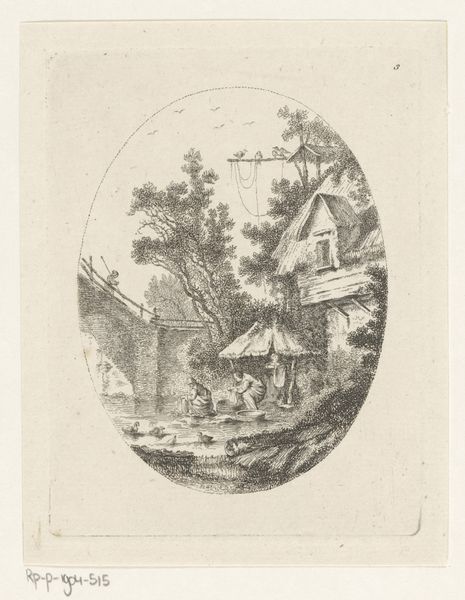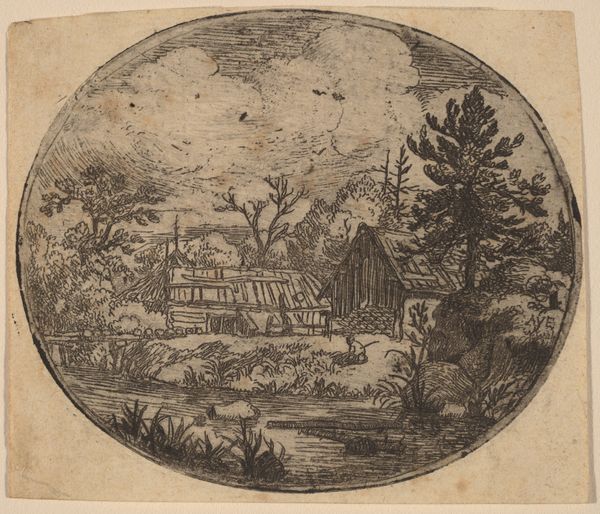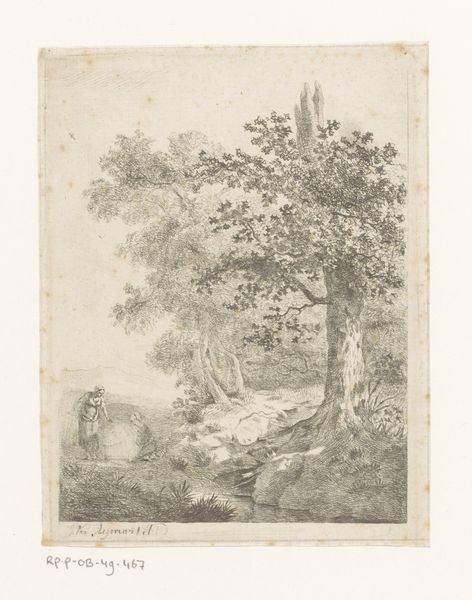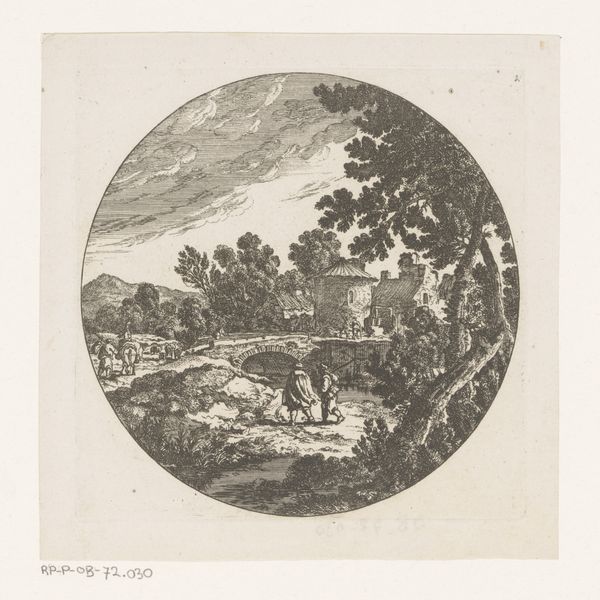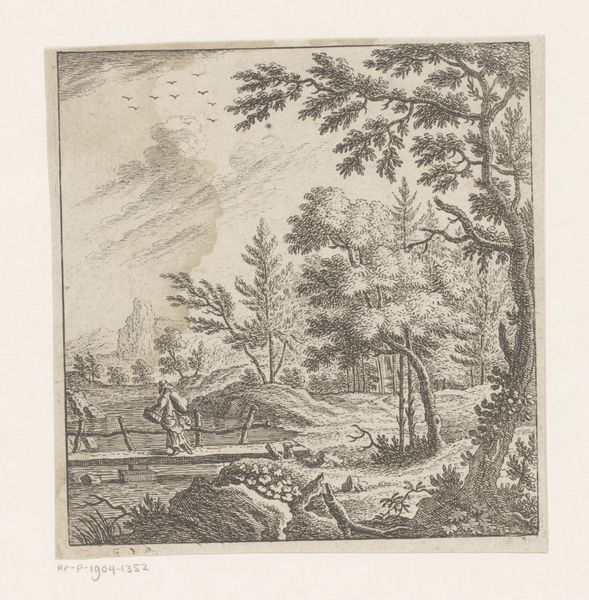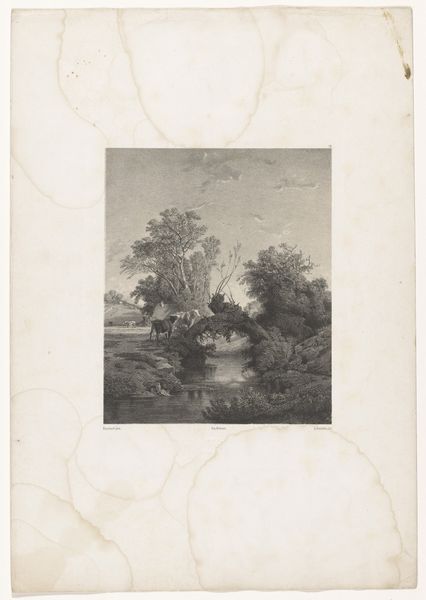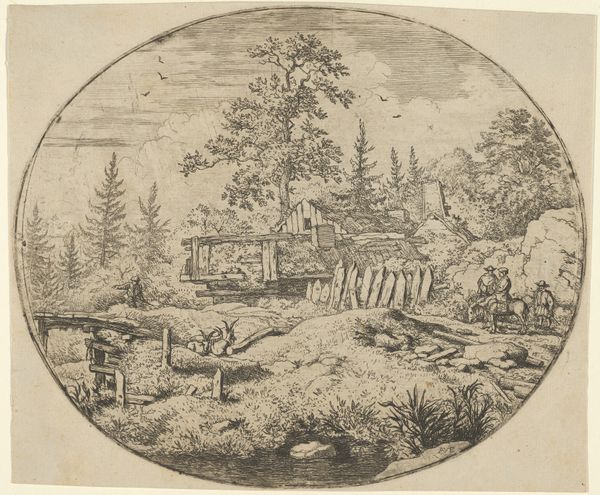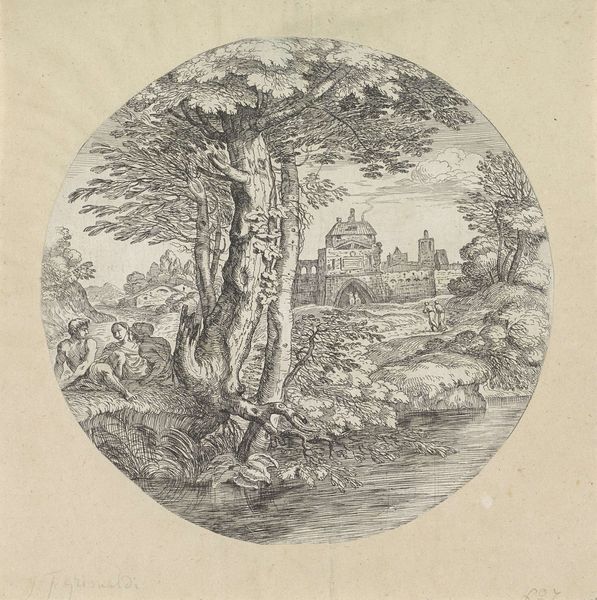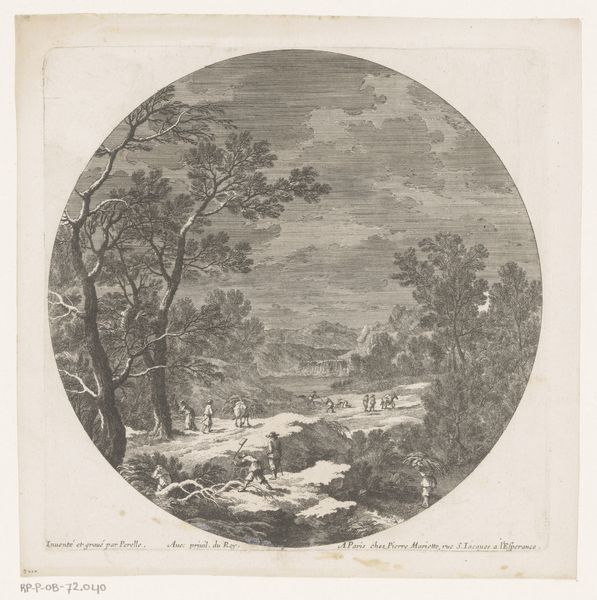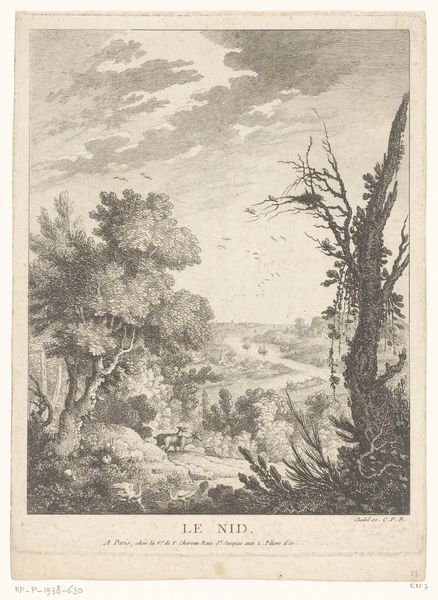
print, etching
#
baroque
# print
#
etching
#
landscape
Copyright: National Gallery of Art: CC0 1.0
Curator: Allart van Everdingen created this etching, titled “Hamlet between the Trees,” sometime between 1645 and 1656. What strikes you upon first seeing it? Editor: There’s a compelling contrast, I think, between the dark, tangled vegetation in the foreground and the airy sky occupying the upper left—a sort of chiaroscuro effect, even within a monochrome print. It evokes a feeling of being both enclosed and expansive at once. Curator: Indeed. Everdingen was instrumental in popularizing Scandinavian landscapes in Dutch art, even though this image may depict an anonymous Dutch hamlet rather than a Scandinavian subject. Consider how his work fits within the broader cultural phenomenon of the Dutch Golden Age and the growing interest in naturalism and the everyday lives of rural populations. Editor: And what an interesting example of Dutch naturalism it is! The rough texture of the bark, the detailed foliage, even the slightly crooked construction of the building—these elements combine to create a highly convincing representation of the natural world. The composition, enclosed by an oval border, reinforces this feeling of capturing a specific view or moment in time. Curator: One must also think of the broader market for prints like these, the growing urban middle class hungry for accessible depictions of landscapes they might not have the chance to experience firsthand. Everdingen capitalized on this desire, offering meticulously crafted images of rustic scenes, reinforcing certain ideals about the Dutch countryside and rural life. Editor: Yes, while the image strives for a realistic feel, the carefully arranged details, from the positioning of the trees to frame the building to the deliberately textured strokes suggesting light and shadow, betray a level of artistic intervention. There’s artifice here that reminds us we are viewing a carefully constructed representation, not a mirror of nature. Curator: Exactly, and to push that idea further, it is important to know that the growth of the print market afforded artists the means of production to create imagery with a specific agenda and that those agendas played a central role in statecraft and sociopolitical matters. Editor: The nuances in the contrasts offer a reminder of how skillful deployments of texture and tonal shifts can do wonders to a seemingly simple subject. Curator: From a historical standpoint, reflecting on the interplay between the burgeoning art market and evolving social dynamics provides the context that makes images like this more significant.
Comments
No comments
Be the first to comment and join the conversation on the ultimate creative platform.
